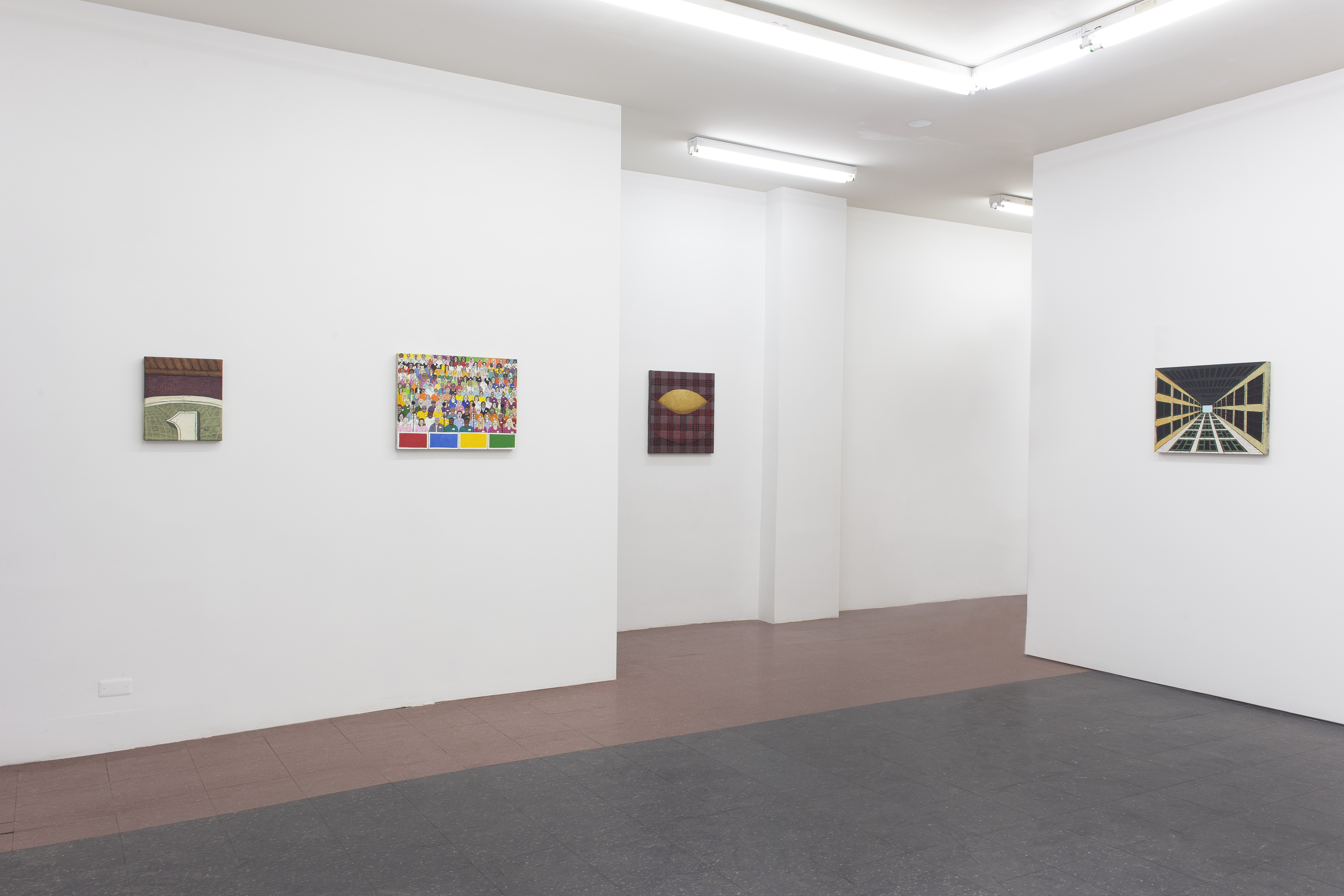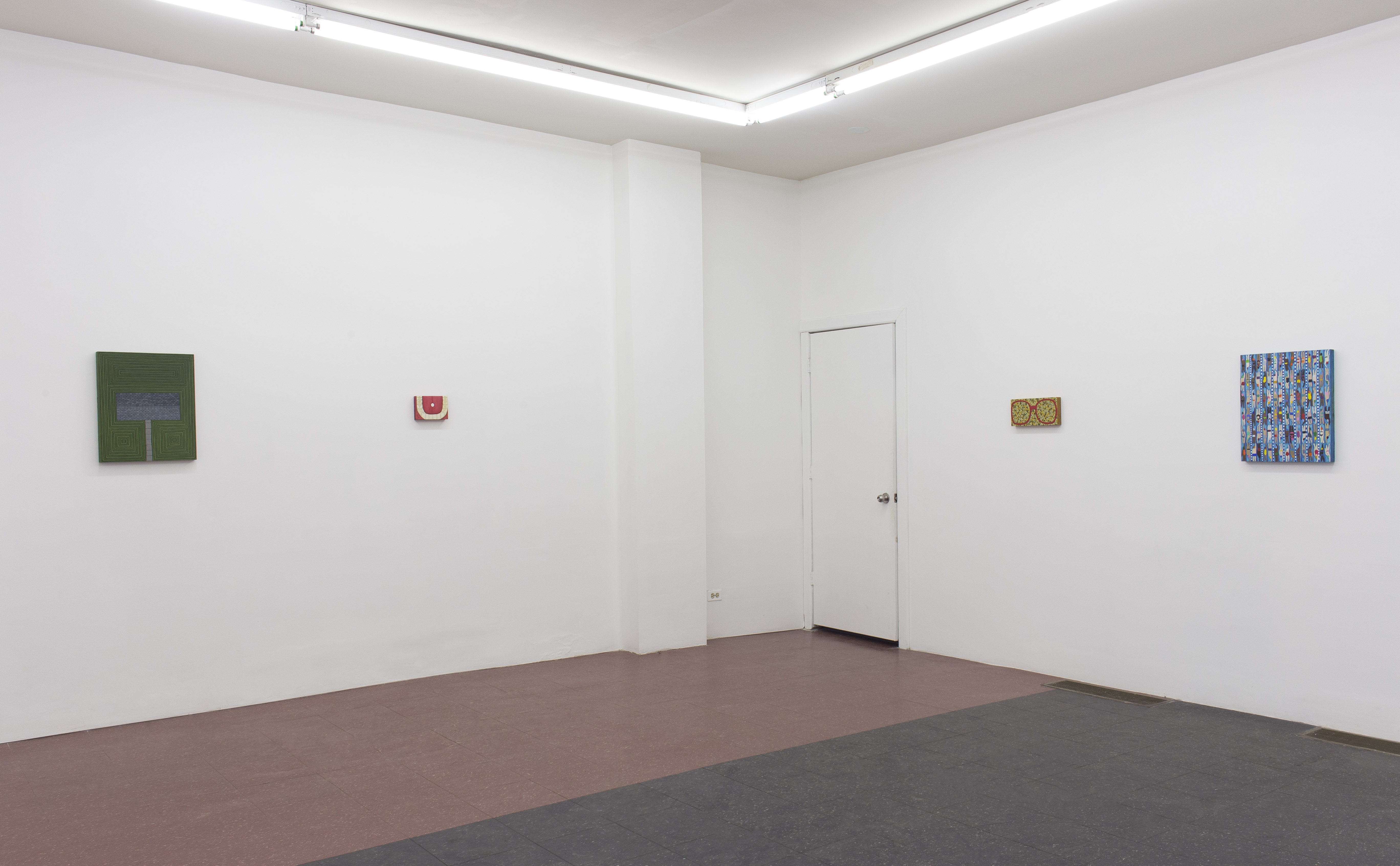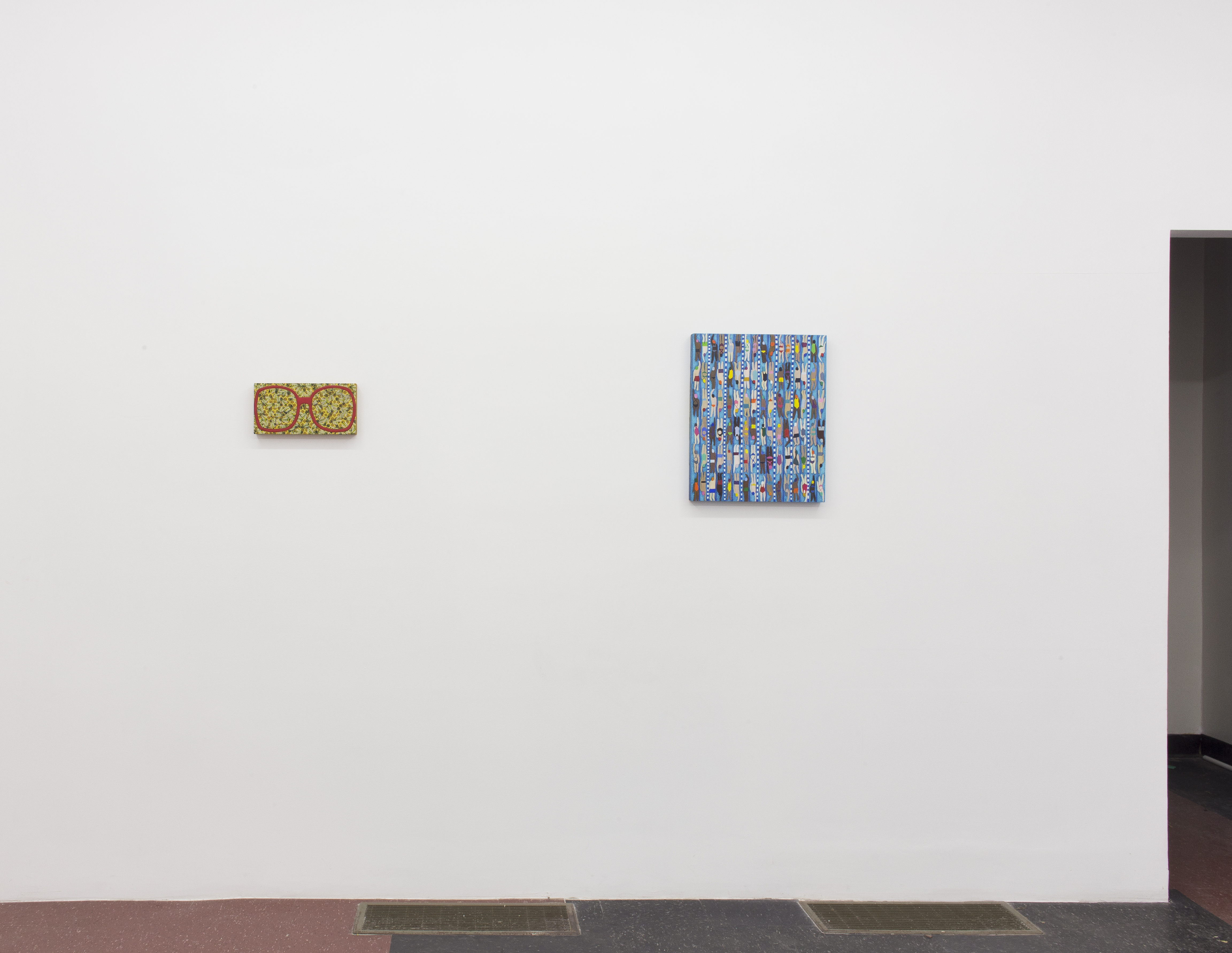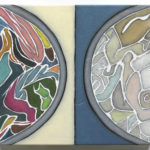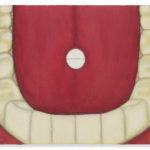
Ryan Richey is a storyteller. From humble everyday scenes to epic family tales, his anecdotal paintings cite memories that drift from banal to downright eerie. Brought up in a family with a strong oral tradition, Richey was used to hearing varied renditions of family histories. Everyone spun their own wild versions of each story, and though that made truth harder to pinpoint, they culminated in a rich, compounded family mythology that continues to influence Richey’s work.
Despite the old adage concerning their exact worth in words, it’s not easy to tell a story with a picture. And Richey’s pictures, which are often cropped and pared down to abstraction, can be difficult to decipher. A glimpse of a common material, or a clue from the title, however, is usually enough to set one in the right direction. Using this tack, some familiar scenes emerge—a laundromat, a suburban lawn, a public pool. In these examples the cropping and symmetry work like mandalas, creating meditative patterns from ordinary environments and day-to-day activities. The theory jives with their making too; Richey’s process is slow, methodical, contemplative. These observations combined with their modest size point to a moral narrative which celebrates simplicity and elevates the everyday—an allegory for the working class.
Among these innocuous scenes, however, Richey includes others of a more dubious nature, ones less on the up-and-up, yet just as familiar. A rolled dollar bill, a tiny pill, even the daytime television episode all tell a story of idleness and desperation. Not to be confused with bourgeois ennui, these sad snapshots speak to the joblessness and depression brought on by a failed economy and a working class in crisis—realities not at all lost on Richey. For decades, the decline of manufacturing, the collapse of blue-collar communities and the rise of the opioid epidemic have wreaked havoc throughout his Rust Belt home.
Not unlike the gruesome stories read to children in Grimm’s Fairy Tales, many of the legends told by Richey’s family were conceived as cautionary tales. That the hardships witnessed and undergone by his relations had been translated into such extraordinary fables is remarkable in itself, and yet it follows a long folk tradition. Having sprung from that same tradition, Richey’s paintings also hint at struggle and pain, and in their craftsmanship, their attention to detail, they likewise appeal to our curiosity and catch us spellbound.
Join us for the opening reception on September 21, from 6–9 pm.
